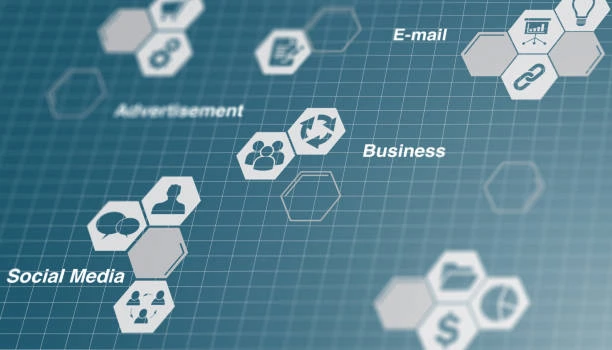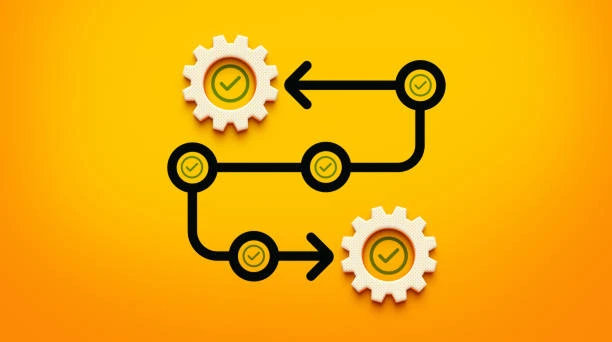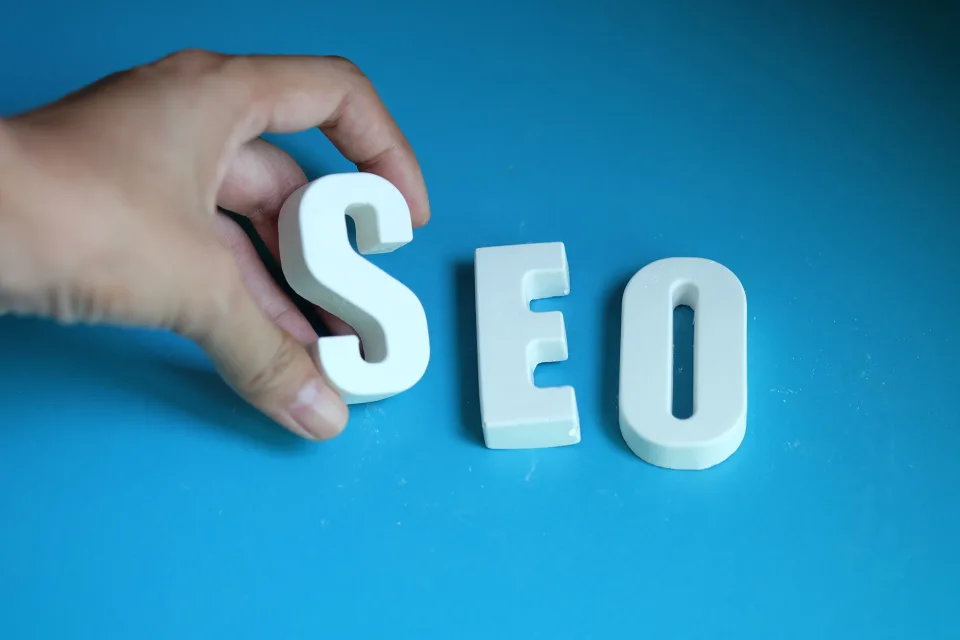
Introduction: Why Automation Matters in Modern Marketing
Manual marketing is like trying to fill a bucket with a teaspoon in today’s fast-paced digital world: it’s slow, doesn’t work well, and can’t grow. Companies, especially small to medium-sized ones, need to reach their target markets without overworking their employees. Marketing automation tools can help by making tedious activities easier, sending targeted content, and getting outcomes based on data. These technologies help businesses convert leads into loyal customers by saving time and streamlining processes. Automation is important for both new and old businesses to stay competitive. This tutorial talks about what marketing automation is, what it can do for your business, and how platforms like HubSpot, Mailchimp, and Zapier can help your business develop.
Let’s look at how marketing automation tools can change the way you do things.
What Is Marketing Automation? (Definition + Key Concepts)
What is Marketing Automation and How Does It Work?
Marketing automation tools are technology that handles repetitive marketing tasks—like sending emails, posting on social media, or tracking customer data—with minimal human effort. It uses software to run campaigns based on triggers, schedules, or user actions. For example, when someone signs up for your newsletter, a marketing automation tool form can send a welcome email, add them to a targeted list, and follow up with personalized messages based on their behavior.
At its heart, automation relies on workflows—rules that trigger actions. Imagine a lead visiting your pricing page but not buying. A workflow could send them a tailored email with a discount code. Tools like HubSpot and Mailchimp make this process seamless, saving you time and keeping your messaging consistent. In 2025, these platforms will also incorporate advanced machine learning to refine these workflows, adapting to user preferences in real-time, which enhances their effectiveness.
Types of Automation (Email, CRM, Social, Workflows)

Marketing automation tools cover several areas to streamline your efforts:
- Email Marketing Automation: Sends targeted emails based on user actions, like welcome sequences or abandoned cart reminders. Mailchimp’s marketing automation tools, for instance, power drip campaigns to nurture leads.
- CRM Automation: Integrates with a CRM with marketing automation tools to track leads, score them by engagement, and pass hot prospects to sales. HubSpot and Salesforce shine here.
- Social Media Automation: Schedules posts and monitors engagement across platforms. Zapier automation for marketers connects social channels to other apps for unified campaigns.
- Workflow Automation: Handles internal tasks, like assigning leads or updating data, cutting down on manual work.
Each type makes your customer journey smoother and more personalized. In 2025, the integration of these types is becoming more seamless, with platforms offering all-in-one solutions to simplify management and improve cross-channel performance.
Marketing Automation vs. Email Marketing
Email marketing automation is only one component of marketing automation tools. Email marketing focuses on sending emails, often manually or with basic scheduling. Marketing automation tools extend their functionality by integrating email with CRM, social media, and analytics to create a comprehensive omnichannel experience. For example, while email marketing might send a newsletter, a platform like ActiveCampaign can send emails, update CRM records, and post to social media—all triggered by a single action, like downloading an eBook. This holistic approach is increasingly vital in 2025 as consumers expect consistent engagement across multiple touchpoints.
Benefits of Marketing Automation for Businesses
Save Time and Reduce Manual Work
Marketing automation tools relieve you of repetitive tasks, allowing your team to concentrate on strategy. Platforms like Mailchimp automate email sends and contact list updates, so you don’t have to do them by hand. Setting up a welcome email series takes just minutes but runs indefinitely, saving hours each week. Plus, automation cuts down on human errors, ensuring your messages are always on point. In 2025, these tools will also integrate AI to suggest optimal sending times and content adjustments, further reducing workload and enhancing efficiency.
Improve Lead Generation and Nurturing
Lead nurturing with marketing automation tools transforms how you connect with prospects. Tools like HubSpot score leads based on actions—like visiting your site or opening emails—and deliver tailored content to guide them through the sales funnel. A B2B business might send case studies to keep leads engaged, while an e-commerce store could offer product suggestions. Automation ensures no lead gets overlooked, boosting your chances of conversion. With advanced segmentation features in 2025, these tools can now predict lead behavior, making nurturing even more effective.
Automate Customer Journeys for Better ROI
Automating customer journeys with marketing automation tools like Mailchimp or similar platforms creates seamless experiences that drive results. For instance, if a customer abandons their cart, they can receive a series of emails with incentives to complete their purchase. These targeted interactions work—automated emails generate 119% higher click rates than regular ones, per industry data. By personalizing touchpoints, you’ll see more revenue without extra effort. In 2025, these tools will also leverage AI to optimize journey paths, maximizing ROI by adapting to individual customer patterns.
Align Sales and Marketing with CRM Integration
A CRM with marketing automation tools connects your sales and marketing teams. Platforms such as Salesforce consolidate customer data, ensuring a shared understanding among all stakeholders. When a lead hits a high score, the CRM can alert sales for immediate follow-up, accelerating the process. This alignment streamlines workflows and increases conversions, making your business more efficient. In 2025, real-time data syncing and AI-driven insights are enhancing this integration, ensuring both teams work with the latest information for better outcomes.
The Best Marketing Automation Tools and Platforms (With Examples)
HubSpot: How to Use HubSpot for Marketing Automation
HubSpot is a top marketing automation platform for businesses of all sizes. Its drag-and-drop workflow builder lets you create marketing automation tool workflows, like lead nurturing or event follow-ups. For example, using HubSpot for marketing automation could involve setting up a workflow in which a lead who fills out a form receives a thank-you email, followed by educational content over a week. HubSpot’s CRM integration keeps sales teams in the loop with real-time lead updates. Its free plan is perfect for beginners, while premium features suit growing businesses. In 2025, HubSpot’s AI enhancements will allow for predictive lead scoring, making it a standout choice.
Mailchimp: Automating Customer Journeys, Email Automation
Mailchimp is a leader in marketing automation tools, particularly for automating customer journeys with Mailchimp. Its automation features include drip campaigns, abandoned cart emails, and customer journey maps. For instance, an online store can utilize Mailchimp to send a reminder email 24 hours after a cart abandonment, providing a 10% discount.ount.ount. Mailchimp’s analytics track open rates and conversions to refine your campaigns. With a free plan for up to 500 contacts, it’s one of the best marketing automation tools for beginners. New 2025 features include advanced personalization options powered by AI.
Zapier: Connect Apps and Trigger Workflows
Zapier’s automation for marketers connects over 8,000 apps to automate workflows across various platforms. For instance, it can connect Mailchimp to Google Sheets, automatically adding new subscribers to a spreadsheet. It’s ideal for businesses using multiple tools, as it cuts out manual data entry. A marketer might set up a “Zap” to tweet a new blog post automatically, enhancing tools for content marketing automation. Zapier’s free plan covers basic automations, with paid plans for more complex needs. In 2025, Zapier’s expanded integrations make it a versatile option for marketing automation toolstools. This tool is crucial for integrating disparate systems, allowing seamless data flow that saves hours weekly and enhances overall efficiency for growing businesses.
Other Examples
Beyond these, here are seven more marketing automation tools to power your business in 2025:
- ActiveCampaign: Combines email marketing automation with CRM for advanced lead nurturing with marketing automation tools. Great for small businesses needing robust features without complexity.
- ConvertKit: Focuses on content marketing automation for creators, offering simple email sequences and landing pages.
- Brevo: Provides email marketing automation tools and SMS campaigns, with a free plan for up to 2,000 contacts, ideal for startups.
- Marketo: A powerful platform for enterprise-level automation, with features like account-based marketing and detailed analytics.
- Pardot: Salesforce’s B2B solution, offering seamless CRM integration for sales-driven businesses.
- Klaviyo: Specializes in e-commerce automation, with strong segmentation and personalization tools.
- Omnisend: Built for e-commerce, it supports multi-channel automation, including email, SMS, and push notifications.
These marketing automation tools offer options for every business, from startups to enterprises, with new features like AI-driven insights rolling out in 2025.
Marketing Automation Strategies for Different Business Sizes

Marketing Automation for Small Business
Small businesses can use marketing automation tools to scale without breaking the bank. Tools like Mailchimp and Brevo are affordable and user-friendly. A small retailer might set up a welcome email series to engage new subscribers, while a service-based business could use HubSpot’s free CRM to track leads. Start with one or two automations, like follow-up emails, to see quick results. In 2025, small businesses can also leverage these tools’ new AI features to compete with larger firms, offering personalized experiences on a budget.
B2B vs B2C Marketing Automation Examples
- B2B: A software company might use ActiveCampaign for a webinar series. After a lead signs up, the system sends a confirmation email, reminders, and a post-webinar case study, nudging them toward a sales call.
- B2C: An online store could use Mailchimp for email marketing automation to recover abandoned carts. A customer who leaves items in their cart gets a reminder email, then a discount offer, driving sales.
Both rely on tailored, trigger-based workflows to engage audiences. In 2025, B2B and B2C marketing automation tools are adapting to handle more complex multi-channel campaigns, enhancing customer engagement.
Marketing Automation Strategy Checklist
To create a solid marketing automation tools strategy:
- Set Goals: Aim to increase leads, sales, or customer retention.
- Know Your Audience: Use buyer personas to customize content.
- Pick the Right Tool: Choose a platform like HubSpot or Mailchimp based on your budget and needs.
- Segment Contacts: Group audiences by behavior or demographics for targeted campaigns.
- Test and Optimize: Run A/B tests to improve emails and workflows.
- Track Analytics: Monitor open rates, conversions, and ROI to refine performance.
This checklist ensures your marketing automation tools’ efforts align with business objectives, with 2025 updates including AI-driven segmentation for better targeting.
Content Marketing Automation Use Cases
Content marketing automation simplifies content delivery. Examples include:
- Blog Promotion: Zapier can auto-share new blog posts on social media.
- Gated Content: HubSpot can send an eBook to form-fillers, followed by a nurture sequence.
- Newsletter Scheduling: ConvertKit can send weekly newsletters with curated content, segmented by reader interests.
These save time and boost engagement. In 2025, marketing automation tools will enhance these use cases with AI-generated content suggestions, making content creation faster and more relevant.
How to Build a Simple Marketing Automation Workflow

Entry Points: Email Signup, Purchase, Form Fill
Workflows in marketing automation tools begin with entry points, which are actions that trigger the automation process. Common ones include:
- Email Signup: A user joins your newsletter via a website form.
- Purchase: A customer buys something on your online store.
- Form Fill: A lead submits a contact form for a consultation.
Each kicks off a tailored workflow to engage users. In 2025, these entry points are becoming more sophisticated, integrating with IoT devices and voice assistants for new trigger opportunities.
Example: Lead Nurturing Sequence with CRM
A lead nurturing sequence that utilizes marketing automation tools and a CRM, such as HubSpot, could be structured as follows:
- Trigger: A lead fills out a form to download a whitepaper.
- Action 1: HubSpot sends a thank-you email with the whitepaper link.
- Action 2: Three days later, it sends a related case study.
- Action 3: If the lead opens the case study, HubSpot assigns a high lead score and alerts sales.
This guide facilitates an efficient purchase process. In 2025, these sequences are enhanced with AI to predict the best follow-up times, improving conversion rates.
Example: Abandoned Cart Follow-Up with Mailchimp
An e-commerce store can use Mailchimp automation features for an abandoned cart workflow:
- Trigger: A customer adds items to their cart but doesn’t check out.
- Action 1: Mailchimp sends a reminder email after 24 hours, highlighting the cart items.
- Action 2: After 48 hours, a second email offers a 10% discount.
- Action 3: If they still don’t buy, they enter a long-term nurture campaign with product recommendations.
This recovers lost sales with minimal effort. In 2025, marketing automation tools like Mailchimp are adding dynamic content blocks to these emails, increasing their effectiveness.
Best Practices to Scale Automation
To scale your marketing automation tools workflow:
- Start Small: Begin with one workflow, like a welcome email series.
- Use Templates: Platforms like Brevo offer pre-built templates for quick setup.
- Segment Audiences: Tailor content to groups like new or returning customers.
- Monitor Performance: Use analytics to tweak underperforming campaigns.
- Integrate Tools: Connect your marketing automation tools platform with CRM and social tools via Zapier for seamless operations.
Scaling gradually keeps your team on track. In 2025, these best practices are evolving with AI tools that suggest scaling strategies based on performance data.
Start Simple, Then Scale with the Right Tools
Businesses aiming for rapid growth should leverage marketing automation tools like HubSpot, Mailchimp, and Zapier, which automate repetitive tasks, nurture leads, and align sales with marketing, delivering measurable benefits like saved time, higher conversions, and better ROI. Small organizations can start with free plans from Brevo or Mailchimp, while larger teams can tap into HubSpot’s powerful CRM integration—begin with one or two workflows, like an email sequence or abandoned cart campaign, and scale as you go. At Stremeline Digital Agency, we specialize in data-driven marketing automation tools and strategies tailored to your needs; book a discovery call at stremelinedigital.com to boost your SEO and streamline your marketing today!



